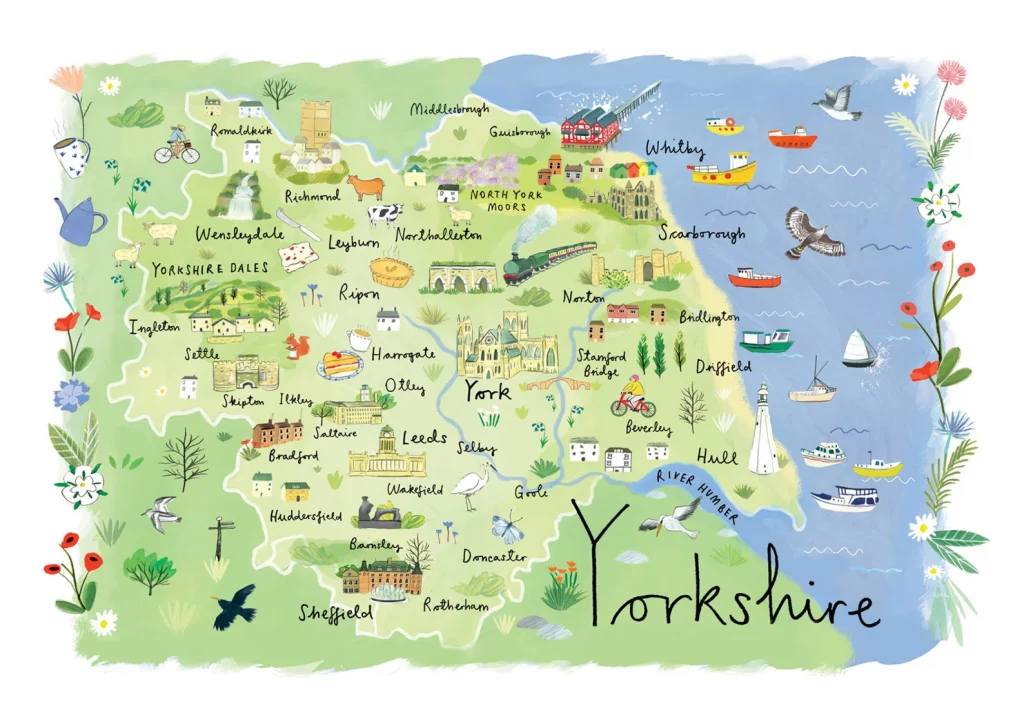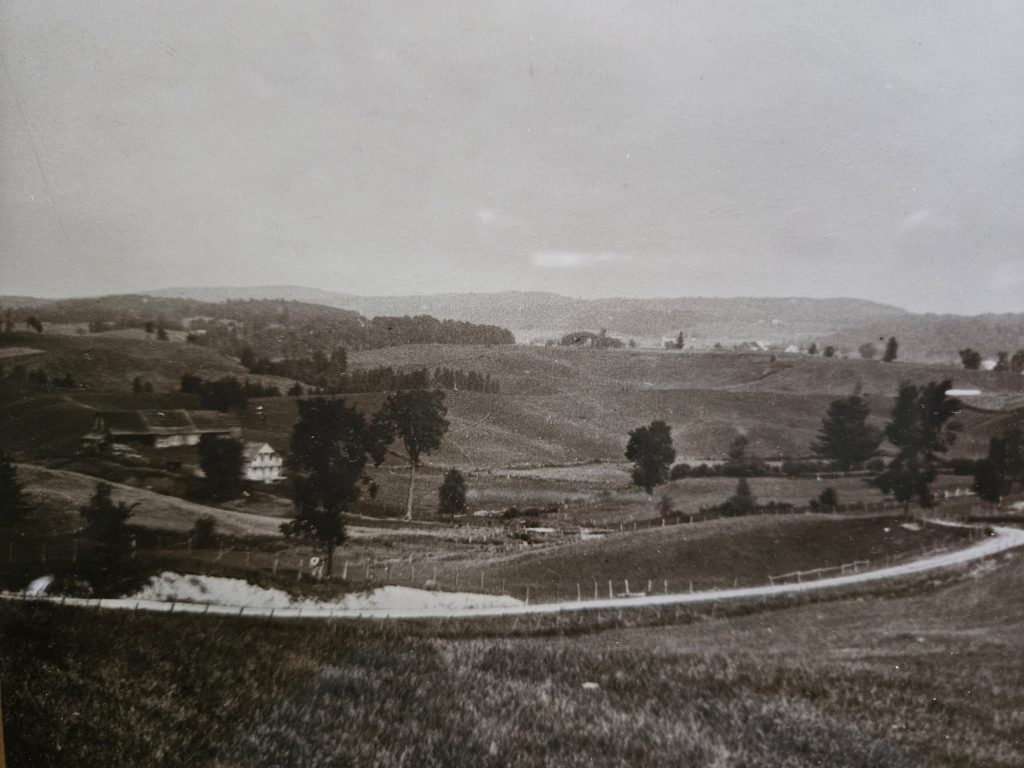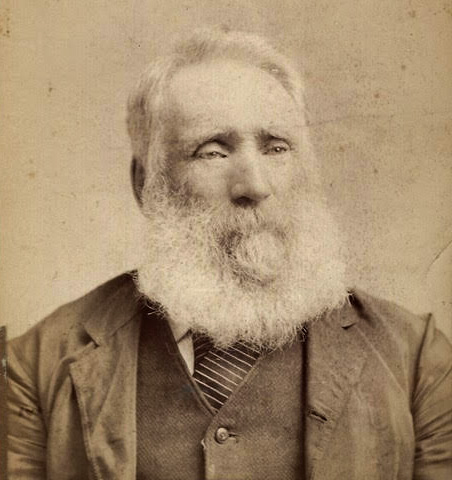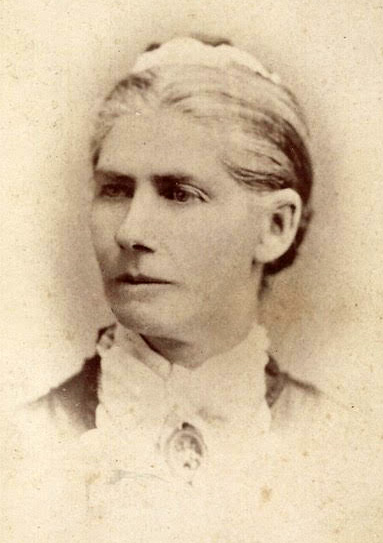On the eve of the celebrations of John Parkinson's family's arrival in Canada and Rawdon, this article recalls the events that led John Parkinson's family to emigrate to Canada, the long journey that brought them to Rawdon, their life in Rawdon and the legacy they left behind. It is based on material published in the book UP TO RAWDON and additional content available free of charge on the website https://uptorawdon.com/. © Copyright Daniel B. Parkinson, May 2024
The Immigrant family
The Parkinson immigrants to Rawdon were lead by John Parkinson who was born May 29, 1768 at Ellerton-on-Swale, a farming village, in northern Yorkshire County, England. As a young man he migrated to the Ryedale area of Yorkshire, near the North Sea. There he married, in 1797, at Kirkbymoorside, to Elizabeth Chapman who was born in 1773. They first lived near her family, at Kirby Mills, Yorkshire where the eldest children were born. Elizabeth accompanied him with their children – Ralph Parkinson was born 22 July 1798 and Mary Parkinson was born March 27, 1801 and brought with her an infant son Robert Parkinson, born at Brawby in October 1823, where the family were settled as farm labourers. Three more sons who accompanied them were born at Brawby – George Parkinson on December 25, 1807, John Parkinson on November 10, 1810 and Daniel Parkinson in June 1819. John was literate and employed as a farm worker. There was a village school at Brawby and his children learned to read and write. Literacy was an advantage many immigrants did not have.

Why did they leave England?
Brawby was an area of fertile and prosperous farms that had been settled for many generations. Why did the Parkinsons, and others from East Yorkshire, leave Brawby at this time, and choose to emigrate to Canada? The post Napoleonic era in England was a time of economic depression, poor harvests, growing inflation and with high unemployment among soldiers returning from the wars. John wanted better opportunities for their sons. One wonders if Mary being an unmarried mother may have influenced the family’s decision to leave their community. Families were encouraged to immigrate and learned from newspapers that government programmes offered free land in Canada.
The Parkinsons were not sponsored by a land company as happened in Upper Canada but came out independently. They realized that John and his three eldest sons were each eligible for one hundred acres of virgin land if they cleared the lot they were assigned, built a house and appropriate out buildings on each, cleared roads at the front of each property, planted crops and paid the yearly administrative fee (which was not easy for settlers without an income).
Getting to Rawdon
The Parkinsons, we believe, left for Canada on 1st of May 2024 , on the bark Diana from Whitby, Yorkshire, a sailing port on the North Sea coast, twenty five miles northeast of their village of Brawby. After fifty-three days at sea, the arrival of the Diana was recorded at the Port of Quebec, on June 22, 1824 with a manifest of cargo and sixteen settlers. It would be a relief to be on land. On June 30, 1824, the passenger list of the steamboat Quebec which travelled from Quebec to Montreal included “John Parkison [sic] & wife & six children, three above 12 & three under 12 years” for 3 shillings and 5 pence. Ralph and Mary were actually young adults; George was a youth of 17 and it appears that 14-year-old John passed, with his five year old brother Daniel, as under 12 years. The additional child was the infant, Robert Parkinson who was baptized to Mary Parkinson at Brawby in October 1823. (We do not know what became of him). Also on the Quebec ’s passenger list on that day were a couple with five children; one of their daughters had a connection to the Thomas Pearson family, the Parkinsons’ Rawdon neighbours who were possibly known to them in Yorkshire.
At Montreal before Rawdon
Mary remained in Montreal and in 1828 married John Tate of Wigginton, Yorkshire. His brothers were prominent Montreal businessmen with government defence contracts and owned a line of steam boats running between Quebec and Montreal, dry docks and shipyards. John and Mary Tate later farmed in St-Malachie Township, (Ormstown), Quebec as did his brothers.
John and his sons, after a brief stay at Montreal, proceeded to gain their permits of occupation, which were issued to John senior, in March 1826 , to Ralph and George in July 1826 and to John junior, when he was 18 in 1828. They soon left Montreal and would be on their land by 1825. They had 400 acres of crown land, and the Letters Patent (ownership) were issued once settlement duties were completed, in 1833. John and his sons were located side by side on the 9th Range – John Parkinson, senior at 9th Range, 21 North, Ralph Parkinson 9th Range, 21 South, John Parkinson junior at 9th Range, 22 North and George Parkinson at 9th Range, 20 North. The Rawdon Census of 1831 places Ralph with a wife and daughter beside John and Elizabeth and their other sons, all at Lot 22.

Sudden Deaths
A tragedy befell the Rawdon family on July 9, 1834. Elizabeth Chapman Parkinson and her son John were reported standing in the door of their cabin when lightning struck the chimney and exited through the open door. The minister wrote in the Christ Church burial register “both called to Eternity and in the twinkling of an eye by a shock of electric fluid.” The deaths were reported incorrectly in The Vindicator and Canadian Advertiser, of July 15, 1834, as death of Atkinson [sic] mother and son at Rawdon. They were buried on the Parkinson farm. Elizabeth was 61, caring for her husband and three working sons, the youngest only fifteen. One can imagine the father’s shock and horror at the loss of his hard working wife of nearly forty years.
Community Presence
John was an active churchman and a member select vestry of the Church of England and Ireland and was a senior church warden in 1834. The Vestry, at this time, undertook the construction of both a new church and a parsonage; vestry was elected and responsible to the adherents, the minister and the bishop. It was both a duty and an honour. On Sunday, June 25,1839 George Copping had noted in his Journal that there was no minister present (at church) and that Mr. Parkinson had preached.
At the end of his life
John Parkinson left Rawdon before the 1851 census probably going to live on the farm of his son-in-law John Tate at (St-Malachai Township) Ormstown. John Parkinson senior died and was buried on March 18, 1853 in St. Paul’s Church of Scotland [now United Church] Cemetery, Ormstown, where a stone for him is reported to be against the church wall. He was 85 and had spent almost 29 years in Canada.
The legacy of John’s son Ralph
Soon after settling at Rawdon, Ralph Parkinson and others signed a petition, on October 1, 1828, begging that patent fees, (what settlers paid to the Crown to process their claims) should not be raised. Ralph petitioned in 1832 that he had received from his father a valuable consideration for the improvements to his lot and asked that his patent be issued to John senior. Ralph had married Margaret Gracy in 1830 and moved to be near her family at 9th Range, Lot 26 on what is now called Parkinson Road.


After her death, he married Esther Scroggie in 1846 and they had eight children who settled in Michigan, New Hampshire, British Columbia and the Eastern Townships. Some children stayed at Rawdon and Ralph has descendants living there – Brent Evans Parkinson and Merle E. Parkinson Campbell and their mother Lillian Evans (Mrs. Clifford Parkinson), also Dudley Parkinson, for years a Rawdon businessman, who is presently a resident of Ste-Julienne.
Ralph Parkinson died April 7, 1866 and Esther Scroggie on May 17, 1889. They are buried in Christ Church Cemetery, Rawdon with a memorial stone that names their origin in Brawby, Yorkshire and County Down, Ireland.
The legacy of John’s son George
George Parkinson was born December 25, 1807 in Brawby, Yorkshire, England and baptized on December 30, 1807 at St. John of Beverly Parish Church, in nearby Salton. He married Susanna Brown on April 17, 1838, at Christ Church in Rawdon. She was born September 8, 1815, in County Antrim, Northern Ireland, a daughter of the settlers Robert Brown and Margaret McMullen, who settled in 1824 - 1825 on the Seventh Range, on the north halves of lots 25, 26, 27, 28. George bought a farm and moved south to Lot 21, 8th Range, on Lake Morgan Road, to be near schools for his children. George and Susan had eleven children. Excepting the youngest son, Daniel, who moved to Waterville in Compton County, all stayed in Rawdon. His grandson Daniel Parkinson of Toronto is a member of La Société d'histoire de Rawdon. La Société d’histoire de Rawdon.
Robert Parkinson and Albert Parkinson of Rawdon are three times great grandsons of George Parkinson as is Dudley Parkinson of St-Julienne (also an heir of Ralph). Four times great grandsons are Allan Edgar Parkinson, who has always lived in Rawdon, and his twin brother, Arthur John Parkinson who lives in Montreal but spends weekends in Rawdon. Stephen James Parkinson, their eldest brother, has returned from Ontario to live at Rawdon. Their sister Laura Eudora Parkinson resides in Montreal and brings their mother Alice Neville Parkinson (Mrs. James Parkinson) to Rawdon for family functions.
George Parkinson died September 11, 1891 and Susanna died on December 4, 1898 and they are buried in the Rawdon United Church Cemetery marked with a large memorial stone.
The legacy of his son Daniel
Daniel Parkinson was born in June 1819 at Brawby, Yorkshire, when his father was 51 and his mother was 46. Daniel married Caroline Kite on May 5, 1842 at Christ Church, Rawdon. She was born in Wiltshire, England early in 1821, the year her father John Kyte / Kite arrived at Rawdon. Daniel purchased a farm near his sister and her husband moved his wife and family to Ormstown in 1852 before his father’s death. Four daughters were born at Rawdon and two more and son at Ormstown. There are descendants of their eldest daughter and of their only son in Quebec and Ontario but none have the Parkinson surname.
Caroline Kite Parkinson died at Ormstown on March 16, 1891 and seven weeks later, Daniel died on June 5. They are buried in St. James Anglican Cemetery, Ormstown.
Other early Immigrants
Settlers at Rawdon, who arrived after the Township opened in 1820, came from England, Ireland and Scotland and a few from America. These families have connections through marriage to the Parkinsons and may be followed in UP TO RAWDON: the Brown family arrived in 1824, Burns in 1820, Copping came to Canada in 1812 & to Rawdon in 1822, Holiday to Canada 1820 & Rawdon 1823, Holtby to Canada 1821& Rawdon in 1823, Irwin 1823, Kirkwood 1820, Kite 1821, Marlin and Law 1823, Scroggie 1823-1824, Gracey 1827-1828, Rourke 1826. Somewhat later to arrive - Blagrave 1841, Boyce 1831, Sharp 1832-1835, Smith in Canada c.1828 to Rawdon 1832. They are part of the Parkinson connection to Rawdon Township and the British and American families who made homes and farms in what were once called the “waste lands of the crown.”
